
In the ever-evolving field of sleep medicine, our understanding of obstructive sleep apnoea (OSA) has expanded substantially. The importance of precisely diagnosing and categorizing this condition has become paramount, given its widespread prevalence and impact on public health. The latest edition of the journal Sleep and Breathing presents an original article titled “The prognostic role of ultrasound and magnetic resonance imaging in obstructive sleep apnoea based on lateral oropharyngeal wall obstruction”. Authored by esteemed researchers Viktória Molnár, et al, the article delves into cutting-edge imaging techniques and their significance in assessing OSA.
Obstructive sleep apnoea (OSA) is a prevalent condition characterized by upper airway collapse during sleep, leading to symptoms like fatigue and concentration issues. Despite its widespread occurrence, many remain undiagnosed. OSA can result in severe complications, including cardiovascular diseases, stroke, and metabolic disorders, underscoring the need for early detection and treatment. Its causes range from anatomical issues to respiratory control instability. Polysomnography is the primary diagnostic tool, with drug-induced sleep endoscopy pinpointing obstructions. The lateral pharyngeal wall (LPW) plays a critical role in obstructions, but its assessment using radiologic imaging remains underexplored. This study aims to investigate the LPW using ultrasound and MRI to enhance OSA diagnosis and understanding of LPW obstructions.
In a prospective study at Semmelweis University, 100 adults (74 males, 26 females; average age 42.15 ± 11.7 years) were examined for obstructive sleep apnoea (OSA) using comprehensive methods. Participants underwent otorhinolaryngological evaluations, polysomnography, cervical ultrasound (US), MRI, and drug-induced sleep endoscopy (DISE). The study excluded individuals with certain medical conditions, surgeries, or traumas. Overnight polysomnography identified apnoea and hypopnoea events, while DISE examined airway obstructions using the VOTE classification. Ultrasound was conducted to visualize the parapharyngeal space, and MRI detailed the lateral pharyngeal wall thickness. Statistical analyses used various methods, including logistic regression and neural networks, with no single established ‘gold standard’ for combination.
The study compared parameters in obstructive sleep apnoea (OSA) and control groups. Significant differences were noted between the groups in terms of gender, age, and BMI. Ultrasound (US) showed a significant difference in the left LPWT during MM, with a trend of higher values in OSA patients. MRI revealed differences in right and left LPWT. Gender influenced US and MRI values of LPWT, while age only affected MRI results. Correlations between LPWT, AHI, and BMI were identified. A combination of US and anthropometric measurements predicted OSA with 93% accuracy and LPW-based obstruction with 89%. MRI had slightly lower predictive values. Ultrasound measurements predicted obstruction severity with varied success rates, with the best results in no-obstruction cases. Using neural networks, obstruction severity was prognosticated with 98% accuracy when categorized broadly.
Emerging evidence indicates that the lateral oropharyngeal wall (LPW) plays a pivotal role in OSA’s pathogenesis. By employing advanced ultrasound (US) and magnetic resonance imaging (MRI) techniques, the researchers embark on a detailed examination of the LPW in OSA patients. Their findings could revolutionize the way clinicians approach diagnosis and treatment, underscoring the vital role of modern imaging modalities in enhancing our comprehension of sleep-related disorders. This pioneering work marks a significant step forward in the ongoing quest to fully understand and effectively manage OSA.
The advancements in imaging techniques, particularly ultrasound and magnetic resonance imaging, have opened new horizons in understanding obstructive sleep apnoea, as highlighted in the recent publication by Molnár et al. in Sleep and Breathing. Their exploration into the implications of the lateral oropharyngeal wall’s role in OSA illuminates the intricacies of the disorder, paving the way for improved diagnostic precision and therapeutic strategies. The groundbreaking findings of this study underscore the indispensable nature of innovative imaging modalities in sleep medicine. As the field continues to progress, incorporating these advanced techniques will be instrumental in enhancing patient care, leading to more targeted interventions and better outcomes for those afflicted with OSA.
References / You can access the article at the following link:
Leave a reply

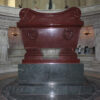


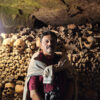

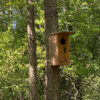
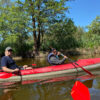


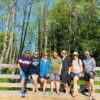




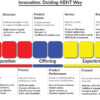
Prahlada Sir 💐
‘Sleep medicine’ , is a new speciality of interest in recent times.
The most important topic in this discipline , is ‘ obstructive sleep apnea (OSA) ‘.
You have nicely depicted the importance of 3 imaging techniques :
* ultrasound
examination,
* MRI &
* DISE ( Drug
Induced Sleep
Endoscopy ), especially targeting lateral pharyngeal wall , in diagnosis of OSA.
In addition to above mentioned imaging techniques, clinical evaluation & overnight sleep studies , including polysomnography may help in characterising the ‘severity’ of OSA.
Reply